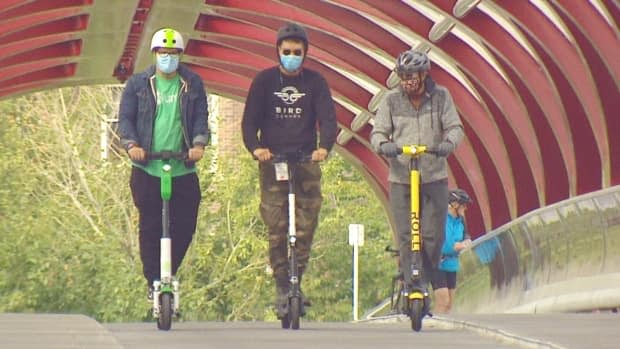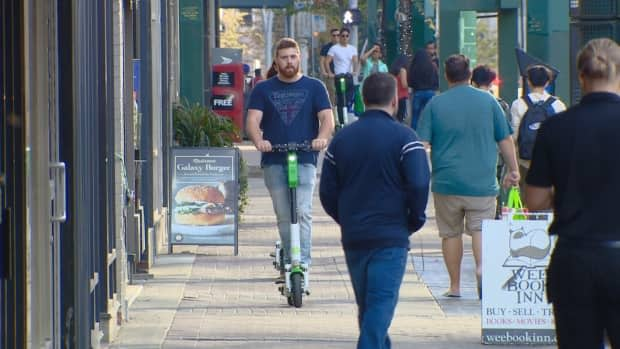Calgary researcher finds hidden e-scooter demand outside of downtown

A University of Calgary researcher has looked beyond the success of e-scooters in the city's downtown to delve more into the potential demand outside of the core.
Research associate Dr. Merkebe Demissie, of the U of C's Schulich School of Engineering, says one thing was clear when he first started looking at the city's data: downtown has the lion's share of scooter usage.
But digging into that success, he was able to create a metric for potential demand in other city communities.
"We decided to study instead of the existing demand, we said perhaps we should explore more on the potential demand," Demissie said. "Maybe people in the other quadrants of the city would like to use a scooter, but they may not have a supporting bike or a scooter infrastructure."
There are a handful of factors that make downtown a magnet for e-scooter trips, Demissie explained.
Because of the population density, transportation choice and connectivity that's been built in the core, people looking to get to work, or to spend some time by the Bow River Pathway, can easily grab an e-scooter and go.
The city has also put a lot of investment into making the core connected for walkers and wheelers — with projects like the downtown protected cycle track and the LRT infrastructure built up over time.
Right now, Demissie believes scooter users in Calgary are early adopters. As the technology settles into the city, it may well become part of more people's daily lives.

Demissie said he found 95 per cent of the city's e-scooter trips happen downtown.
But other parts of Calgary have the potential for more scooter use, based on the criteria that make downtown a hotspot.
Taking the scooter data and layering it with other sources like census data, Demissie was able to see that some inner-city communities like Sunalta, the Beltline and Lower Mount Royal have under-realized demand. That's partly because they are not as connected.
Even more suburban areas like Kingsland, Sunridge and Varsity could be untapped areas that, with smart infrastructure investments, could flourish, he said.
"We noticed if we built supporting cycling infrastructure in those areas, those areas could actually realize their potential, and there would be people using scooters," Demissie said. "This kind of information will be useful, for example, for city officials to compare to different areas of the city and to decide which areas they should prioritize in the future to build supporting bike infrastructure."
If you build it they will come
Sustainable Calgary executive director Celia Lee said this research is exciting on many levels.
Increasing the number of scooter users, she said, can help the city cut down on vehicle emissions, but it can also help the city build an equitable transportation system and network in areas that don't have that type of investment.
"That means prioritizing investments in high need areas, such as neighbourhoods with lower incomes," Lee said. "It's an issue of social justice, as well as an issue of keeping the economy running."
Some of the changes could be as minor as an intersection improvement. Others might take more work. But the basic idea, Demissie found, was if you build it, they will come — and planners should start looking at the areas with untapped potential first.
City says research helps inform decisions
The city welcomes this type of research.
"It's a massive data set," said City of Calgary transportation strategist Andrew Sedor. "It's millions and millions of data points. And so it's great to have university researchers actually look into that data and see what trends are occurring."
Different researchers see different trends based on their interests, Sedor added.
The city is working with University of Calgary students on several scooter-related research projects. One project, Sedor noted, has even prompted the private-sector scooter companies to pitch in investments for capital projects.
"It's valuable for us and it's also valuable for the students, [enduring] for the future economy," Sedor said.

 Yahoo Movies
Yahoo Movies 